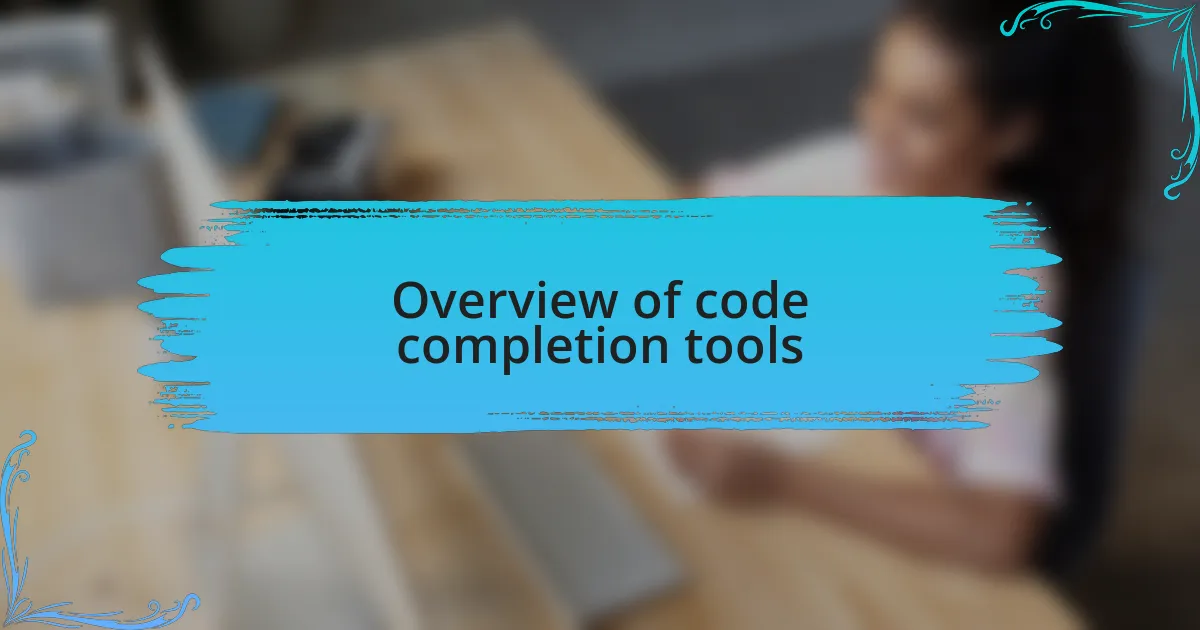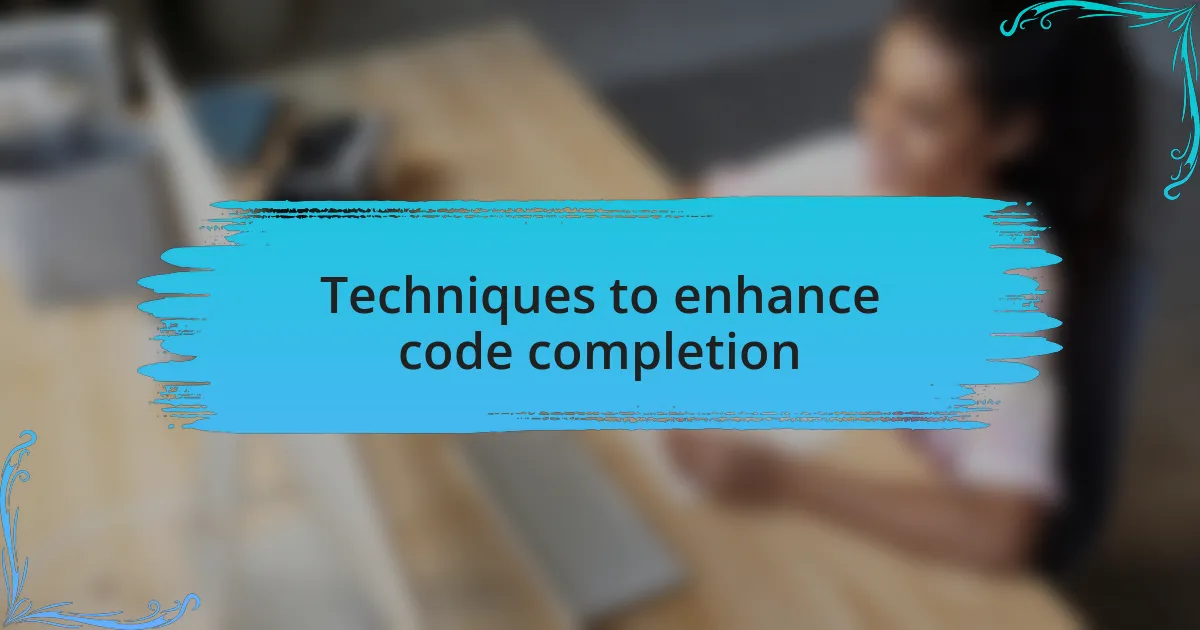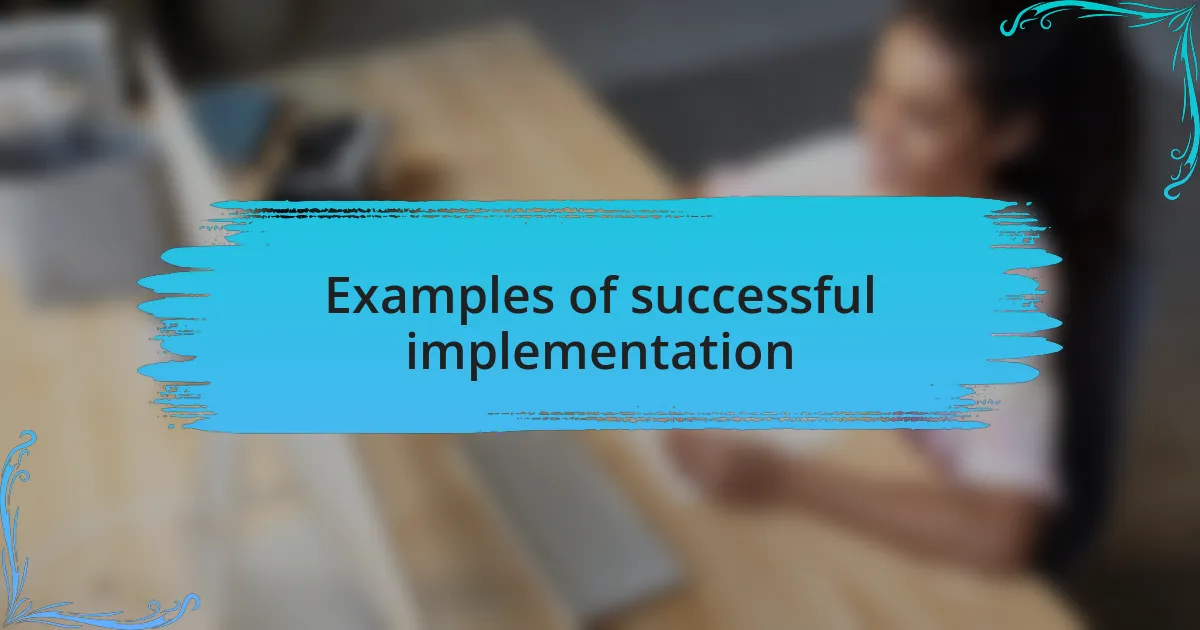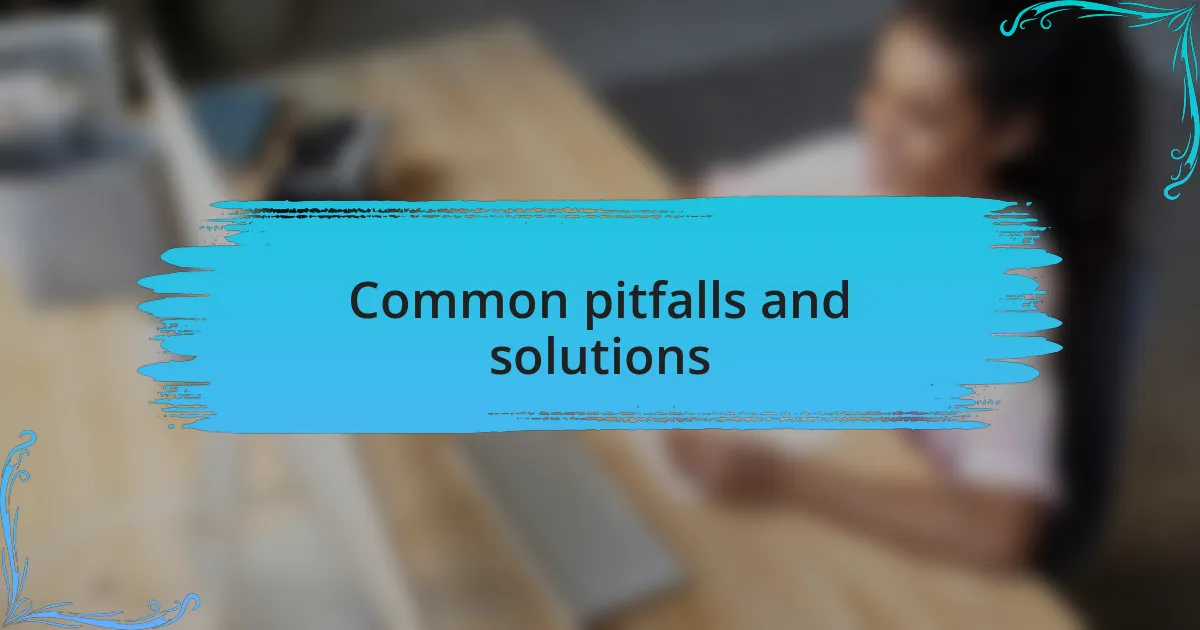Key takeaways:
- Code completion tools boost developer productivity by providing context-aware suggestions, increasing efficiency and understanding of coding syntax.
- Customization of IDE settings and use of code snippets can significantly enhance workflow and reduce distractions from irrelevant suggestions.
- Collaboration among developers through shared code completion settings can lead to more effective coding practices and enriched output.
- Regular updates of IDEs and plugins are crucial to maintaining optimal performance and accessing new features that improve code completion.

Overview of code completion tools
Code completion tools have become indispensable companions for developers, enhancing productivity and reducing the chances of errors. I still remember the first time I encountered auto-completion in my IDE; it felt like having a co-pilot guiding me through the labyrinth of coding. Can you recall a moment when a code suggestion saved you from a frustrating bug? These tools not only provide suggestions for functions and variable names but also adapt to the coding context, making them remarkably intuitive.
While the primary function of code completion is to speed up coding, I’ve found that they also foster a deeper understanding of the syntax and structures I’m working with. It’s fascinating how these tools can present alternatives that trigger new ideas or ways to approach a problem. Have you ever discovered a method or library just because it popped up in your suggestions? That’s the magic of code completion tools—they can open doors to solutions I hadn’t even considered.
Moreover, the best code completion tools evolve with their users, learning from past patterns to offer increasingly relevant suggestions. I’ve seen some IDEs tailor their autocomplete features to my unique coding style, which is both comforting and empowering. It makes me wonder: how much more efficient can we become as these tools get smarter? Emphasizing adaptability is key, as it mirrors our journey as developers, constantly learning and growing alongside our coding practices.

Techniques to enhance code completion
One effective technique I’ve found to enhance code completion is customizing the settings in my IDE. Tailoring features such as the frequency of suggestions or the types of suggestions based on the project context can significantly streamline my workflow. Have you ever felt overwhelmed by irrelevant suggestions? Adjusting these settings helped me filter out the noise and focus on what truly matters in my project.
Another technique I swear by is taking advantage of snippets. By creating custom code snippets for frequently used code patterns, I can reduce the amount of typing needed while still keeping my code organized. I remember the sense of relief I felt when I transformed a repetitive task into a concise snippet; it felt like I had found a hidden treasure that saved me time and energy. Have you tried this in your coding routine?
Incorporating collaboration tools into your IDE can also greatly enhance code completion. When working with a team, I often find that sharing code completion settings and templates ensures everyone is on the same page, leading to a more cohesive coding experience. It’s like having a shared language that fosters collaboration and understanding. How has collaboration shaped your coding practices? In my experience, it often reveals new insights that I wouldn’t have considered alone, enriching the quality of our collective output.

Examples of successful implementation
One great example of successful implementation comes from my own experience of leveraging artificial intelligence in code completion. I integrated an AI-powered plugin in my IDE that not only predicts the next lines of code but also learns from my coding style over time. The thrill of watching the suggestions become increasingly tailored to my personal workflow was unmatched. Have you ever wondered how much faster your coding could be with such tools at your disposal?
Another impactful instance was when I teamed up with fellow developers to share a common code completion setup. We set up a shared repository of snippets and templates that aligned with our project needs. The sense of camaraderie was invigorating; it felt as if we were building a coding lexicon together. Have you thought about how collaborative practices can enhance your individual coding efficiency?
Lastly, I can’t help but mention the profound effect of user feedback on optimizing code completion settings. After I made minor adjustments based on feedback from peers—like changing default shortcuts and adding new layer of context sensitivity—I noticed a remarkable leap in productivity. It’s fascinating how a community-driven approach can sharpen your coding skills, wouldn’t you agree?

Common pitfalls and solutions
When optimizing code completion, many developers fall into the trap of overloading their IDE with too many plugins. I’ve been there myself—installed every shiny new feature only to find my workflow stalling under the weight of excessive choices. The solution? I learned to streamline by focusing on plugins that offered the most value, eliminating distractions, and honing in on tools that truly enhance productivity. Have you ever paused to consider which tools genuinely serve your coding needs?
Another common pitfall is neglecting to customize settings specific to your projects. I remember sticking to the default suggestions for far too long, which often resulted in incorrect or irrelevant completions that slowed me down. By taking a step back and tailoring preferences based on the context of my work, I noticed a miraculous uptick in the accuracy of suggestions. Have you tailored your IDE settings to align better with your project requirements?
Moreover, many developers overlook the importance of regular updates for their IDEs and plugins. Initially, I didn’t see the value in keeping everything up-to-date, but a few frustrating bugs later made it clear just how crucial updates can be. Staying current not only fixes known issues but can also introduce new features that enhance code completion, making your experience smoother. Isn’t it worth taking a few minutes to ensure your tools are operating at their best?